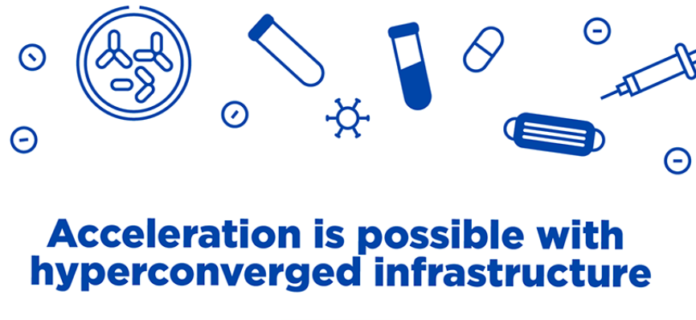After considering the adoption of a hyper-converged infrastructure (HCI) which has flexibility and scalability, Nikkei is revamping its core system NEO and has chosen Nutanix as the virtual platform for NEO.
“First, we wanted to make effective use of existing assets—our own data centres,” said Hiroyuki Ichiki, manager of Nikkei’s information technologies bureau. “It was also important to revamp the infrastructure without changing the application layer, to ensure a smooth switchover.”
The Nutanix-based NEO+ began operations in 2019 with minimum nodes in Nikkei’s Windows-based cluster and the Linux-based cluster. In order to avoid waste in costs, they have gradually increased the number of nodes by taking advantage of Nutanix, and the platform officially started its operations in February 2021.
For stable operations, Nikkei used Nutanix’s replication factor function to ensure data redundancy and availability. As a business continuity plan measure, Nikkei have connected their data centres in East and West Japan via dedicated lines, and the backup software is used to synchronise data in almost real-time.
Nikkei had been operating NEO on a private cloud built in the company’s own data centre. NEO comprises systems for newspaper production, enabling the submission of manuscripts, editing and layout and print data transmission. It also includes systems for human resources, general affairs, and accounting. However, they were not satisfied with its operation management and scalability of its cloud platform.
Masaaki Sera, deputy manager of IT at Nikkei, said that since migrating to NEO+, backup operations can be performed in a matter of days using the snapshot feature, when it used to take weeks of manual operations.
“One of the merits of using Nutanix is its rich application programming interface, which makes it easy to automate. It has reduced workloads, such as paying out resources,” said Sera.
The COVID-19 pandemic has led to a rapid increase in remote work and the need for new resources. Faced with this challenge, Nikkei was able to quickly expand the nodes with a little configuration work.
Nikkei’s intends to use different products and services as needed, whether they are on a private or public cloud, as well as designing and operating an infrastructure that is not locked into a specific technology or environment.
“Nutanix’s openness in not having to use specific clouds or hardware is in line with our company’s philosophy of designing infrastructure with a high degree of freedom,” said Ichiki. “We are hoping to accumulate know-how and technology that will allow us to speedily design and build in-house, using Nutanix solutions.”
















